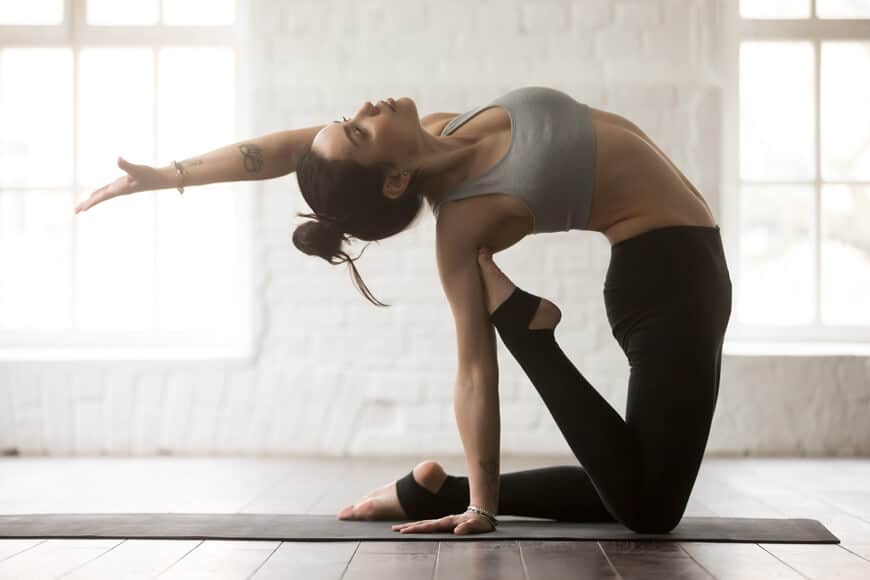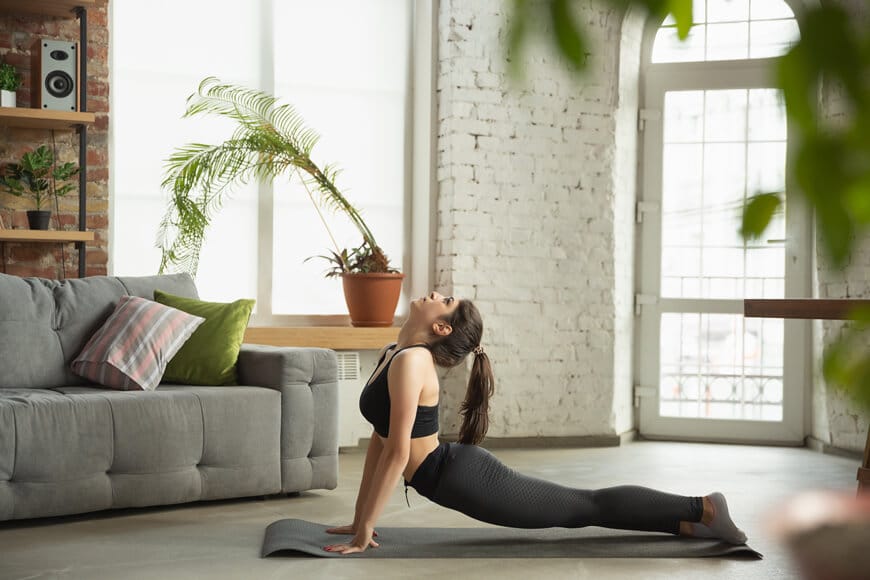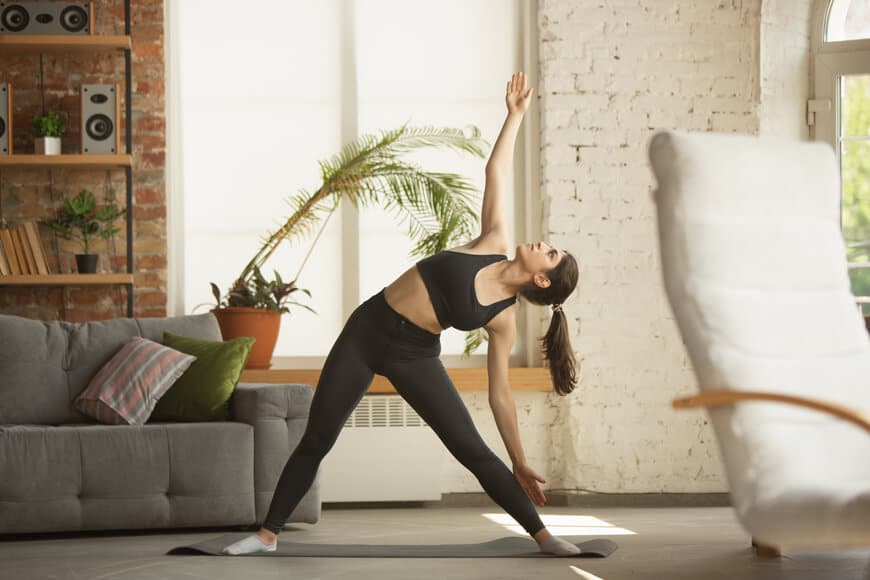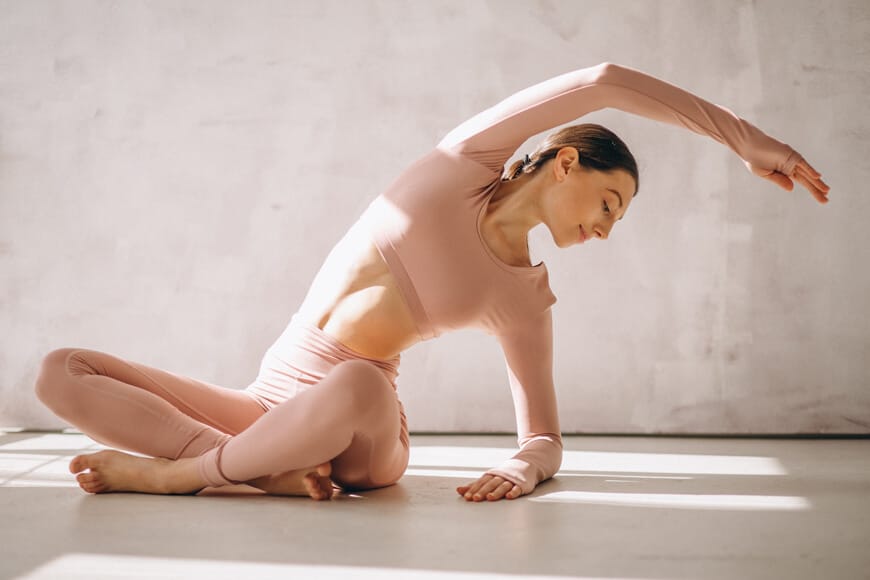How Long Does It Take To Get Flexible? Here Are Some Practical Guides
by Susan T.
How long does it take to get flexible? There’s no one-size-fits-all flexibility routine, but increasing your flexibility is attainable with regular, persistent, and consistent stretching.
Flexibility is a crucial part of a well-balanced training program, vital to sustaining quality of life as we get older. Being committed and devoting adequate time to increase your range of movement and reduce body tensions and pains is essential.
Taking a long time to see positive results happens only to those who do not take the flexibility regime seriously. This post will tackle some practical strategies to regain or increase your flexibility. Let’s get started!

How Does Flexibility Work?
When you concentrate on increasing your range of movement, several changes emerge in the body, enhancing your flexibility.
Besides the muscles around the joints, the yellow ligaments are also affected by the stretches you make. On the other hand, nerves like stretch receptors transmit info to the muscles regarding relaxing and contracting.
The receptors work by alerting the muscles to stop stretching because they can cause damage. Therefore, stretching gradually and consistently helps restrain these signs or somewhat work through them by causing them to fire religiously.
Why Is Flexibility So Important?
Flexibility is crucial for the body as it offers many positive effects. Some of the benefits include good posture, mobility, muscle coordination, and prevention of muscle soreness and risk of injuries.

Surprisingly, flexibility can also give you an attractive shape. It works by increasing your range of movement, thus, making it effortless to execute different exercises.
Your muscles shorten over time without working on your flexibility gradually and consistently. When you’re inflexible, the stiffness you feel limits your activities when exercising and doing other tasks.
You can gain flexibility by doing regular exercises, foam rolling, and consistent stretching. Doing stretches before exercising enhances the blood flow in your muscles.
What Should You Do To Increase Flexibility?
Some of the effective ways to get more flexible include:
Warm-ups before exercises
The gist here is to get your heart rate up and your body warm before doing any activity. This approach inhibits injuries and body pains.
Execute some passive stretches.

Holding a position for a few minutes soothes your muscles. Hold passive stretches for a minimum of thirty seconds after a workout when your body is warm.
Avoid doing passive stretches before activity since doing so can reduce your strength and power, resulting in injuries.
Give way for break time.
Set your alarm, get up, and stretch after an hour when working on a computer screen from 9 to 5. This approach promotes increased blood flow, making you feel better and more productive.
Practice yoga.
Develop core strength and increase your flexibility by doing yoga. Activities like swimming, running, and cycling are more likely to cause joint and muscle tightness.
Get a relaxing and therapeutic massage.
Getting a massage from a licensed massage therapist and a Swedish massage can relieve tightness in different body parts.
They also release muscle strain and tightness, loosening you up and making you more flexible.
What exercises can increase your mobility and flexibility? Watch this video:
What Are The Best Types of Stretches For Increasing Flexibility?
PNF Stretches

This stretching works faster and is more effective in increasing your flexibility than static stretches.
Steps:
Contract and relax your muscle conversely when stretching. Contract your hamstrings for about five seconds when you’re in a forward fold.
Then, release for five seconds, contract the muscles, and take turns until you reach thirty seconds. Do the same process two to three times.
Passive or Static Stretches
This stretching encourages you to move your muscles to their peak range of movement. You’ll feel a mild sensation when doing this stretch, but it’s painless.
Steps:
Before doing passive stretches, make sure to warm up your muscles first. Otherwise, you can get an injury.
Hold the pose for fifteen to thirty seconds, then release. Do the position repeatedly for three times more before moving to the next stretch.
RELATED: Curious to know the importance of stretching to increase flexibility? Read this: The importance of stretching
How to accelerate getting flexible?
Warm-up
Do warm-ups before doing your stretches to prevent tearing or injuring your muscles. Perform light cardio for about five to ten minutes to attain a great warm-up.
Indeed, it’s ideal to do some stretches after a different exercise that you usually do. Releasing the muscles after a workout does wonders, making it effortless to create a constant habit of stretching.
Nutrition
You can prevent suffering from cramps and increase your flexibility by drinking plenty of fluids. Getting sufficient sodium and potassium is also crucial to preventing cramps.

Similarly, protein promotes quick recovery, and calcium works effectively in strengthening connective tissues.
Fatty acids lubricate joints, glucosamine averts cartilage disintegration, and magnesium helps the body use calcium. Interestingly, ginger is advantageous in relaxing muscles.
Don’t rush anything.
It’s pointless to do stretching in a rush to speed up desired results. You’ll pressure your muscles if you rush it, making it challenging to do deeper stretches. Performing too much too quickly will only result in getting injuries.
Foam Rolling
This form of release is also called self-myofascial. It’s about rolling on a tennis ball or foam cylinder to eliminate fascial adhesions.
Fascia is the white film covering the muscles and keeping everything in place. It helps accelerate recovery and eliminate knots after rigorous workouts but once damaged; it minimizes your flexibility and mobility.
Tip: If you’re not comfortable rolling on a tennis ball, consider using a deep tissue massage.
Dynamic Stretching
This form of stretching enables your body to execute weight movements, such as lunge or squat, through an extensive array of movements.
It’s an excellent supplemental exercise even though it’s more on heightening the range of movement for already flexible people.
Dynamic stretching prepares and stimulates the right muscles before doing static stretches. It manages tighter spots where pain prevails when attempting to execute an extended passive hold.
Don’t do too much too soon.
Avoid pushing or forcing your stretches harder. This move won’t help fix your imbalance issues and perfect your splits.
Doing too much too soon results in muscle tearing that averts your recovery. Instead, perform the stretches gradually and in a steady mode to avoid body and muscle pains.
Incorporate stretching into your weight training

You can build your stretching routine into your weightlifting training. For instance, you may go for a deeper lunge wherein you’ll utilize a lighter weight.
Alternatively, execute some stretches before each move to incorporate stretching into your weight training.
RELATED: Read this page to discover how BFF 2-person yoga can benefit your body and mind: The Best 25 BFF 2 Person Yoga Poses For Cool Yoga Friendship
The Perks of Increased Flexibility
Healthy Nervous System
Your movements and lack of movements significantly affect your nervous system. Did you know that shortened tissues can obstruct your nerves, reducing their capability to function correctly?
As you develop flexibility, your sixth sense or self-movement also increases. Typically, you can observe significant increases in your feet, wrists, shoulders, and hands.
Injury Prevention
This advantage is more evident in individuals who commonly execute strength training only. Strength workouts shorten and tighten our muscles, causing imbalances and disintegrating our range of movement.
Consequently, you don’t stimulate proper muscles when executing a movement correctly, resulting in knees, neck, lower back, and shoulder injuries.
Stretching works excellently in balancing the body and minimizing the risk of injuries from executing physical activities.
Reduced Pain
Aging makes you more prone to experiencing chronic pain, particularly in the joints and lower back areas. Therefore, you’re more likely to lose flexibility and experience cramps and muscle soreness.
While many things cause this specific issue, a reduced range of movement and an inactive lifestyle are usual causes.
Fortunately, different body aches lessen by balancing your strength and stretching your muscles flexibly.
Increased Circulation
Heart vitality is vital for excellent circulation; however, the vascular system is complicated. This system extends through the whole body; our movements and lack of movements can affect it.
You can tell that there’s a problem in your circulation when you experience tightness in specific areas. Doing some stretches helps release tight areas and enhances your body’s overall circulation.
Sit Comfortably
9 to 5 desktop jobs or frequent traveling makes it troublesome to sit for extended hours due to reduced mobility. And the moment it increases, it becomes effortless to remain still in the same position longer.
SEE MORE: How should leggings fit? Learn more here: How Should Leggings Fit? Here Are The Essential Things To Keep In Mind
How Long Does It Take To Become Flexible With Yoga?
Generally, you should start seeing increased flexibility within two to four weeks of yoga. Nonetheless, you can only achieve that if you incorporate stretching at least five days per week.

Practice a range of stretches for your entire body to feel the burn. It’s best to begin slowly but gradually make way for stretching as you practice daily.
How Long Does It Take To Regain Lost Flexibility?
Experts reveal that it’s critical to concentrate on stretching major muscle groups twice to thrice per week.
Major muscle groups consist of muscles in the arms, shoulders, back, and legs. An ideal target is executing eight to twelve repetitions of an exercise.
Consistent and regular stretching helps regain your flexibility in two to four weeks.
How Long Does It Take An Inflexible Person To Become Flexible?
The time it takes for an inflexible person to become flexible depends on several factors. These factors include the frequency of doing your stretches and if you stretch correctly.
Moreover, your present level of flexibility and genetics affect the time it takes for you to be flexible. It’s necessary to stretch each muscle group for half an hour, at least thrice a week, for better outcomes.
If you’re committed to strength training and devote adequate time for exercise, you can attain your flexibility goals.
Final Thoughts
Did you find our post about “How Long Does it Take to Get Flexible” informative? However, several factors affect your flexibility; you can regain or increase it through effective strategies.
Initially, stretching may cause discomfort, making you want to quit. But, your body will instantly uncover that you’re doing something good rather than damaging it.
If you start small and increase your flexibility by employing the strategies shared above, your body will reap many benefits.
Unquestionably, there are several perks to gain when you start doing some stretches. These perks include more mobility, flexibility, better posture, and a better state of mind.
 |
 |
 |
 |
 |
 |
 |
 |

About Susan T.
Susan T. is an internationally celebrated yoga teacher, but to her, it all started with a very basic motivation: she just really wanted to be able to touch her toes. Susan has come a long way since then- she now regularly leads yoga teacher trainings and workshops all over the world, and has been featured in Yoga Journal, Mantra Yoga, San Jose Mercury News / Health, and more. But Susan will tell you that her simple quest for flexibility has led her to so much more than just touching her toes.
Leave a Reply
Now get FREE Gifts. Or latest Free Yoga Mats here.
Disable Ad block to reveal all the secrets. Once done, hit a button below
 |
 |
 |
 |